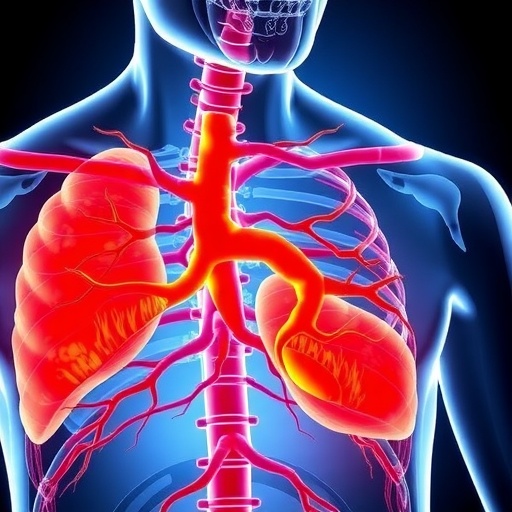Credit: Marscha Hirschi, Duke University
DURHAM, N.C. — Some of the most effective treatments against viral infections and cancer belong to a class of drugs called nucleoside analogs. These are essentially faulty versions of molecular building blocks that can slip into cells and get incorporated into DNA, effectively throwing a wrench into the machinery that viruses and cancer cells to make copies of themselves.
Such compounds, which include chemotherapeutic agents like 5-fluorouracil and gemcitabine, popular HIV drugs like AZT, and potent hepatitis B treatments like acyclovir, have dramatically changed the outcomes for millions of people afflicted with life-threatening illnesses.
Duke University scientists have now modeled the complex shape and movement of biomolecules to make an animation depicting how nucleoside analogs and natural nucleosides are transported into cells. The heart of the system is a specific molecule aptly named the concentrative nucleoside transporter, or CNT. The scientists' movie shows CNT slowly moving its cargo like an elevator, stopping at various points across the cell membrane before reaching the other side.
Their findings, published early online in Nature, provide important structural information that could be used to design smarter, more specific anticancer and antiviral drugs.
"Our study is the first to provide a visualization of almost every possible conformation of this transporter in motion," said senior study author Seok-Yong Lee, Ph.D., associate professor of biochemistry at Duke University School of Medicine. "By understanding how this transporter recognizes and imports nucleosides, we may be able to redesign drugs that are better at getting inside specific cells like those harboring cancer or a virus."
The blueprint for every living organism lies in the twisted strands of DNA buried within cells. These strands are comprised of four nucleotide "bases" – G, A, C, T, arranged along a backbone of sugars and phosphate molecules. Every time a cell grows and divides, it has to make more copies of those original strands of DNA. Hence, active cells are constantly importing more building blocks to replenish their genetic material, especially the essential nucleosides, which are like a nucleotide base without a phosphate attached.
Fifty years ago, scientists designed the first nucleoside analogs, molecular mimics that muck up this DNA construction supply chain in order to incapacitate rapidly growing and particularly needy cancer cells and viruses.
Like their natural counterparts, nucleoside analogues are carried across the cell membrane by special proteins called nucleoside transporters. In this study, Lee's group sought to capture one of the most common transporters, known as the concentrative nucleoside transporter or CNT, as it traversed the membrane.
Marscha Hirschi, a graduate student in Lee's lab, used a technique called x-ray crystallography to create an atomic-level three-dimensional picture of the protein. She then took a series pictures of CNT in different conformations to produce a kind of time-lapse video of the transporter in action: first, as it is ready to capture the nucleoside uridine on the surface of the cell; next, as it moved across the membrane in stages; and finally, as it released the uridine inside the cell.
"We found that there is a region on the protein called the transport domain that acts like an elevator, shifting into different conformations as it transports cargo up and down across the membrane," said Lee. "Other studies had shown that many transporters move in this way, but ours is the first to record nearly all of the stages of the elevator model. This more detailed understanding could provide a platform to the future development of drugs that are more selective and efficient."
Lee says that transporters responsible for importing a variety of different molecules, such as neurotransmitters, metabolites, and ions, use mechanisms similar to CNT. Thus, the new findings could have implications that reach beyond viral infections and cancer to a number of different clinically relevant physiological processes.
###
The research was supported by the National Institutes of Health (R01GM100984 and R35NS097241).
CITATION: "Visualizing Multistep Elevator-Like Transitions of a Nucleoside Transporter," Marscha Hirschi, Zachary Lee Johnson, and Seok-Yong Lee. Nature, Advanced Online, April 17, 2017. DOI 10.1038/nature22057
Media Contact
Karl Bates
[email protected]
919-681-8054
@DukeU
http://www.duke.edu
############
Story Source: Materials provided by Scienmag




